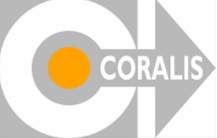
CORALIS’ Resource & Reserve Estimation module provides a quick and efficient solution to mining professionals who wish to estimate their ore resources and reserves through geostatistical analysis, while CORALIS’ Geological Modelling module provides subsurface characterization for complex deposits (dyke, vein, diapir folds, faults, etc.) or for stratiform deposits, using a determinist method.
When used with the Coralis Pit Design module, it indicates the volume for each type of mineral. If CORALIS’ Survey Data Management application is used, it will provide all the necessary features of a dedicated geographic information system, which will record for each survey or drill-hole the grade data (from geochemical analysis), lithology information, and horizons data (for stratiform data management).
1. Block Modelling
CORALIS Block Modelling estimates ore bodies in 2D or 3D.
3D kriging block models can be refined with consistent geological layers so calculations will be guided through one or more 3D areas. This is particularly efficient for sedimentary deposits. Calculations are made using survey data, most specifically grade’s geochemical data.
Geostatistical Analysis lets you calculate and adjust the variogram for each kriging variable. Relevant variables are managed in order of importance (ex.: grades) and weighed according to other variables (ex.: thickness, density, sieving values, etc.) A category is determined by a group of conditions about the estimated variables (ex.: the ‘rich mineral’ category is determined by two conditions: grade1 > cut1 and grade2 > cut2) and is represented by your choice of colour.
Volume is calculated between two 3D surfaces of a project (which can come from the Pit Design module) with quantities allocated for each of the determined grades.
Surveys statistics provide :
- Cross-correlation tables
- Correlation clouds between two variables
- Histograms
2. Complex Geological Modeling
CORALIS’ complex geological model is based on a deterministic model through a network of vertical cuts and horizontal planes.
The ore body’s geology is first analysed through vertical cuts from the survey data. Data is combined from lithological, stratigraphic and geochemistry characteristics for each survey shaft. Then, the model is completed using horizontal planes. For this task, the surface survey and a ‘colour strips’ system ensure coherence with the data from the vertical cuts. The model is used for volumetric calculations or domains definition. The sections and planes adjustments are very easy and intuitive through basic perimeters.
An unlimited number of mineral categories can be defined for vertical cuts and horizontal planes, using survey data. Outcrop maps are calculated, in addition to project volumes with quantities allocated for each of the modelled mineral categories.
3. Stratiform Geological Modelling
You can manage a maximum of 36 layers. The layer or geological body is defined by two areas (without overhang) which determine the top and the wall of that body.
An area (top or wall) can be acquired from:
- A model originating from the Pit and Dump Design application (isohypse, survey interpolation, plans, …)
- A specific altitude
- A reference to another layer (top or wall)

